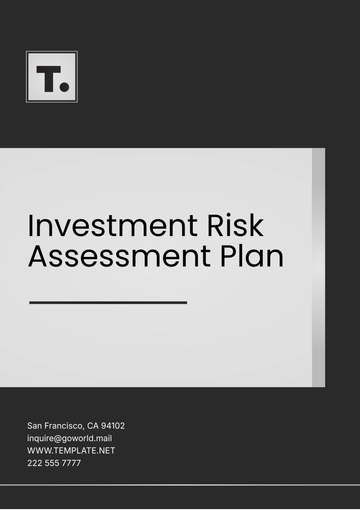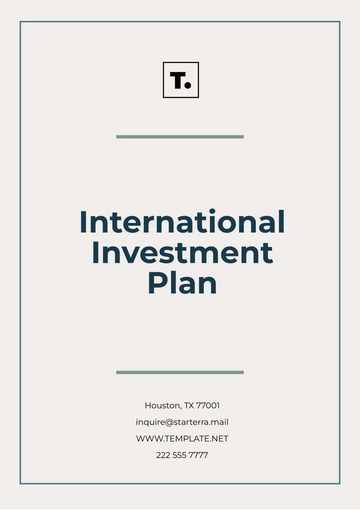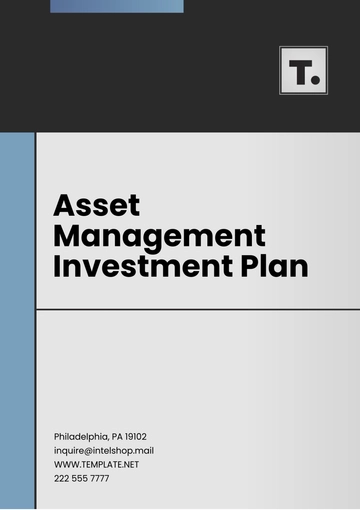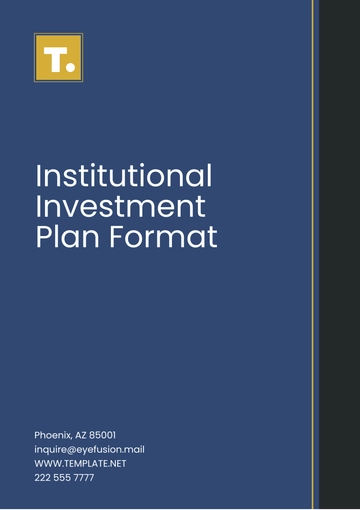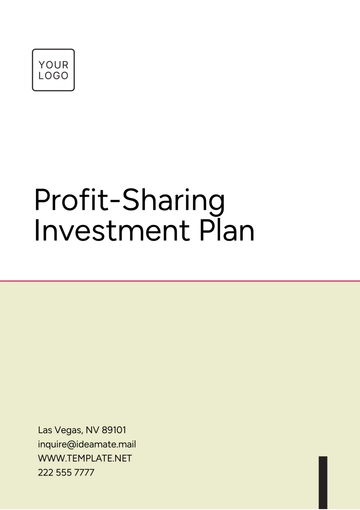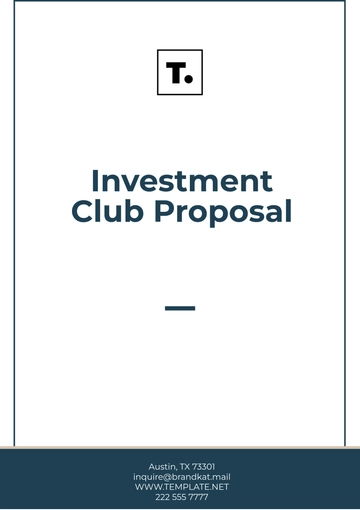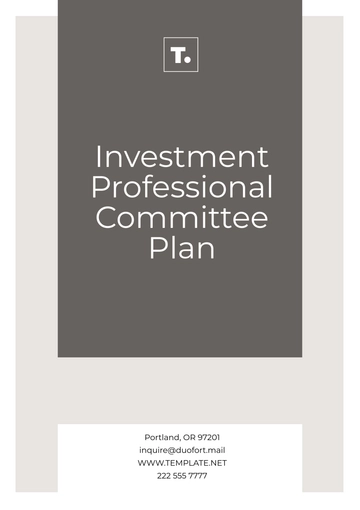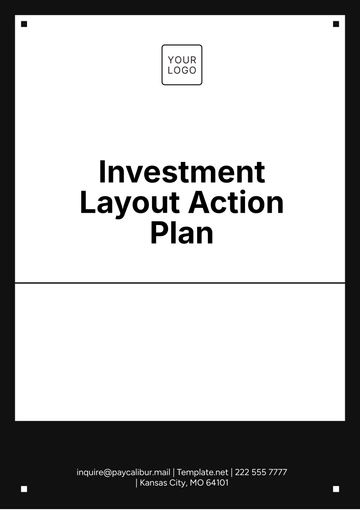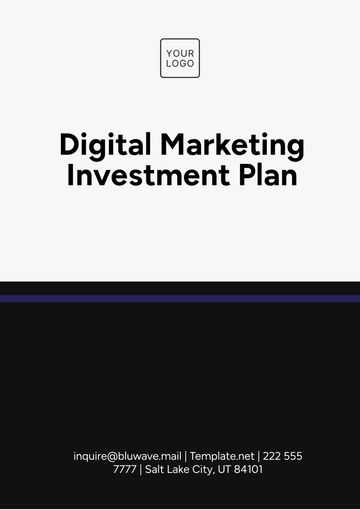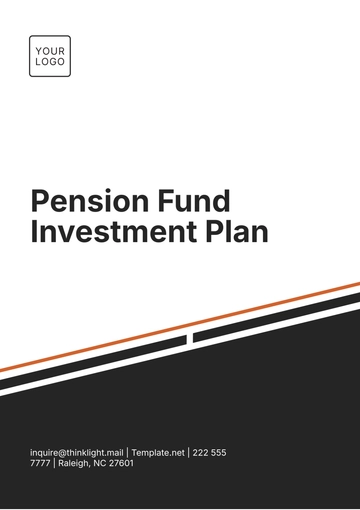Free Institutional Investment Plan Format
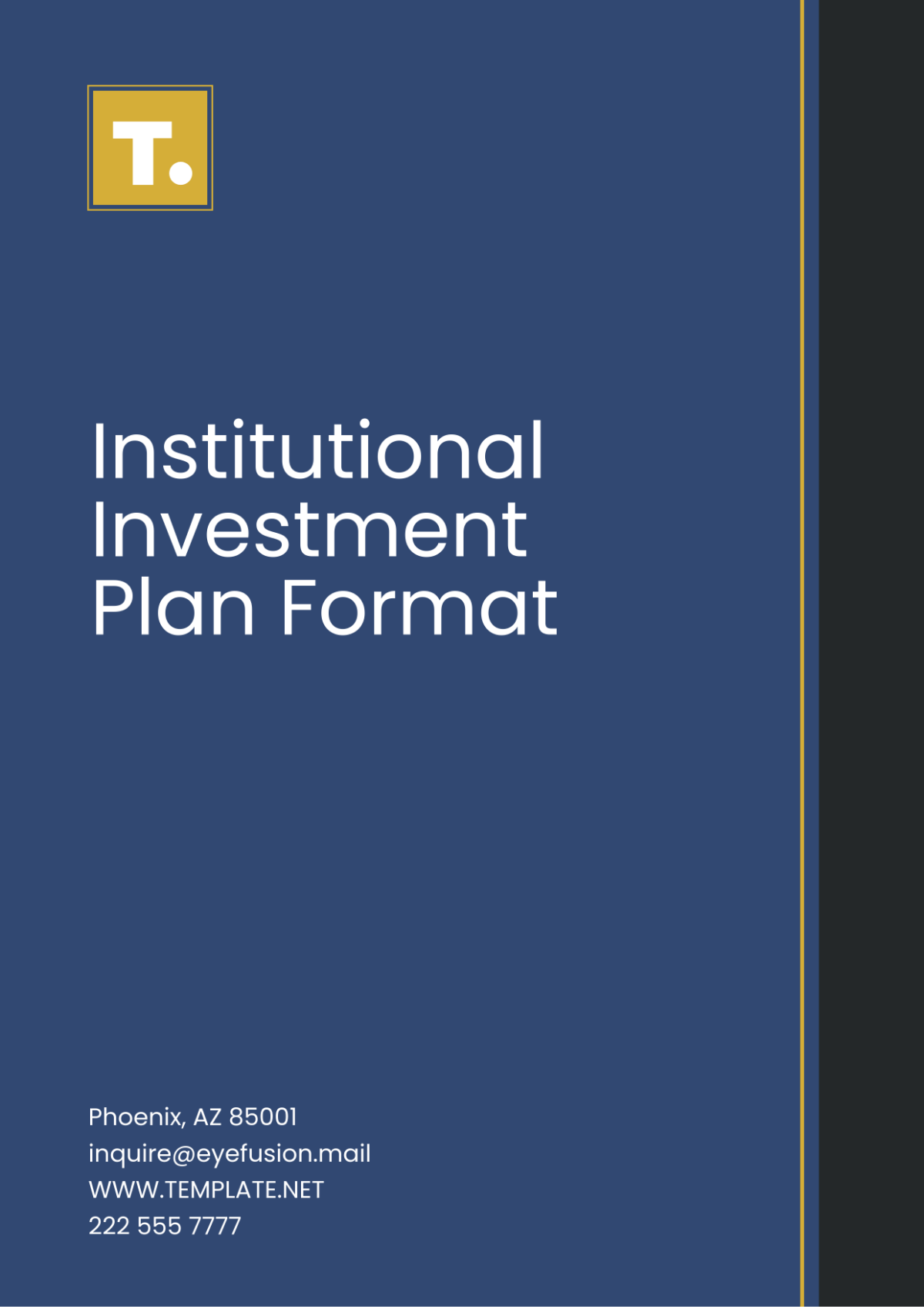
I. Executive Summary
This Institutional Investment Plan outlines the strategic approach to managing and optimizing the institution's investment portfolio. The objective is to achieve sustainable growth, mitigate risks, and ensure long-term financial stability while adhering to ethical investment principles. This plan serves as a roadmap for decision-making, guiding the institution in navigating complex financial markets to maximize returns and support its mission.
II. Investment Objectives
A. Long-term Growth
To ensure the institution's assets grow over time, meeting future financial obligations and funding institutional goals, including program development and infrastructure improvements.
B. Risk Management
To maintain a balanced portfolio that mitigates risks while seeking favorable returns, thereby safeguarding the institution’s financial health against market volatility.
C. Diversification
To spread investments across different asset classes and geographic regions, minimizing exposure to any single market or investment, which reduces overall portfolio risk.
D. Liquidity Management
To maintain sufficient liquidity to meet operational needs and unexpected expenses without incurring significant losses.
III. Investment Strategies
A. Asset Allocation
Determining the percentage of the portfolio to be invested in various asset classes such as stocks, bonds, real estate, and alternative investments, aligned with the institution’s risk tolerance and investment horizon.
B. Active vs. Passive Management
Deciding on the balance between actively managed funds and passive index funds to optimize returns while considering management fees, performance history, and market conditions.
C. Geographic Diversification
Investing in both domestic and international markets to capitalize on global growth opportunities and reduce country-specific risks.
D. Sector Allocation
Distributing investments strategically across various industries like technology, healthcare, and utilities can help tap into growth opportunities and reduce the risk of downturns in any single sector.
IV. Risk Management
A. Risk Tolerance Assessment
Evaluating the institution's risk tolerance through quantitative and qualitative measures to ensure the investment strategy aligns with its risk profile and financial goals.
B. Regular Portfolio Reviews
Conducting quarterly and annual portfolio reviews to assess alignment with investment objectives and make necessary adjustments based on performance and market conditions.
C. Contingency Planning
Developing strategies to address potential financial downturns or unexpected events, including establishing a reserve fund and scenario planning.
D. Stress Testing
Implementing stress tests to evaluate portfolio performance under various economic scenarios, ensuring preparedness for adverse market conditions.
V. Performance Evaluation
A. Benchmarks
Establishing benchmarks based on relevant indices and peer performance to measure the portfolio's performance against market standards.
B. Key Performance Indicators
Identifying specific metrics to track the success of the investment strategy, including return on investment (ROI), volatility, Sharpe ratio, and alpha.
C. Reporting and Transparency
Ensuring regular and transparent reporting to stakeholders, including detailed performance analysis, risk assessments, and adherence to investment objectives.
D. Stakeholder Engagement
Facilitating engagement with stakeholders through presentations, reports, and discussions to ensure alignment with institutional goals and transparency in decision-making.
VI. Ethical Considerations
A. Socially Responsible Investing
Investing in companies and assets that adhere to ethical and socially responsible principles, reflecting the institution’s values and mission.
B. Environmental, Social, and Governance (ESG) Factors
Incorporating ESG factors into investment decisions to promote sustainable and ethical practices, ensuring alignment with the institution’s commitment to social responsibility.
C. Impact Investing
Identifying opportunities for impact investments that generate measurable social or environmental benefits alongside financial returns.
VII. Governance and Oversight
A. Investment Committee
Establishing an investment committee responsible for overseeing the implementation of the investment strategy, reviewing performance, and making strategic adjustments.
B. Compliance and Regulation
Ensuring compliance with applicable laws, regulations, and institutional policies, maintaining ethical standards in all investment activities.
C. External Advisors
Engaging qualified external advisors or investment managers to provide expertise, market insights, and recommendations on portfolio management.
VIII. Conclusion
This Institutional Investment Plan provides a comprehensive framework for managing the institution’s investment portfolio. By adhering to these strategies and objectives, the institution aims to achieve sustainable growth, mitigate risks, and fulfill its long-term financial commitments while aligning with its ethical standards and mission.
- 100% Customizable, free editor
- Access 1 Million+ Templates, photo’s & graphics
- Download or share as a template
- Click and replace photos, graphics, text, backgrounds
- Resize, crop, AI write & more
- Access advanced editor
You may also like
- Finance Plan
- Construction Plan
- Sales Plan
- Development Plan
- Career Plan
- Budget Plan
- HR Plan
- Education Plan
- Transition Plan
- Work Plan
- Training Plan
- Communication Plan
- Operation Plan
- Health And Safety Plan
- Strategy Plan
- Professional Development Plan
- Advertising Plan
- Risk Management Plan
- Restaurant Plan
- School Plan
- Nursing Home Patient Care Plan
- Nursing Care Plan
- Plan Event
- Startup Plan
- Social Media Plan
- Staffing Plan
- Annual Plan
- Content Plan
- Payment Plan
- Implementation Plan
- Hotel Plan
- Workout Plan
- Accounting Plan
- Campaign Plan
- Essay Plan
- 30 60 90 Day Plan
- Research Plan
- Recruitment Plan
- 90 Day Plan
- Quarterly Plan
- Emergency Plan
- 5 Year Plan
- Gym Plan
- Personal Plan
- IT and Software Plan
- Treatment Plan
- Real Estate Plan
- Law Firm Plan
- Healthcare Plan
- Improvement Plan
- Media Plan
- 5 Year Business Plan
- Learning Plan
- Marketing Campaign Plan
- Travel Agency Plan
- Cleaning Services Plan
- Interior Design Plan
- Performance Plan
- PR Plan
- Birth Plan
- Life Plan
- SEO Plan
- Disaster Recovery Plan
- Continuity Plan
- Launch Plan
- Legal Plan
- Behavior Plan
- Performance Improvement Plan
- Salon Plan
- Security Plan
- Security Management Plan
- Employee Development Plan
- Quality Plan
- Service Improvement Plan
- Growth Plan
- Incident Response Plan
- Basketball Plan
- Emergency Action Plan
- Product Launch Plan
- Spa Plan
- Employee Training Plan
- Data Analysis Plan
- Employee Action Plan
- Territory Plan
- Audit Plan
- Classroom Plan
- Activity Plan
- Parenting Plan
- Care Plan
- Project Execution Plan
- Exercise Plan
- Internship Plan
- Software Development Plan
- Continuous Improvement Plan
- Leave Plan
- 90 Day Sales Plan
- Advertising Agency Plan
- Employee Transition Plan
- Smart Action Plan
- Workplace Safety Plan
- Behavior Change Plan
- Contingency Plan
- Continuity of Operations Plan
- Health Plan
- Quality Control Plan
- Self Plan
- Sports Development Plan
- Change Management Plan
- Ecommerce Plan
- Personal Financial Plan
- Process Improvement Plan
- 30-60-90 Day Sales Plan
- Crisis Management Plan
- Engagement Plan
- Execution Plan
- Pandemic Plan
- Quality Assurance Plan
- Service Continuity Plan
- Agile Project Plan
- Fundraising Plan
- Job Transition Plan
- Asset Maintenance Plan
- Maintenance Plan
- Software Test Plan
- Staff Training and Development Plan
- 3 Year Plan
- Brand Activation Plan
- Release Plan
- Resource Plan
- Risk Mitigation Plan
- Teacher Plan
- 30 60 90 Day Plan for New Manager
- Food Safety Plan
- Food Truck Plan
- Hiring Plan
- Quality Management Plan
- Wellness Plan
- Behavior Intervention Plan
- Bonus Plan
- Investment Plan
- Maternity Leave Plan
- Pandemic Response Plan
- Succession Planning
- Coaching Plan
- Configuration Management Plan
- Remote Work Plan
- Self Care Plan
- Teaching Plan
- 100-Day Plan
- HACCP Plan
- Student Plan
- Sustainability Plan
- 30 60 90 Day Plan for Interview
- Access Plan
- Site Specific Safety Plan

